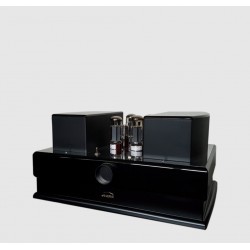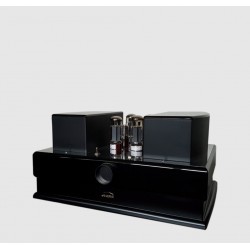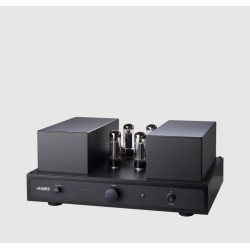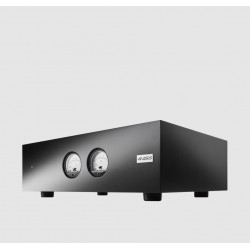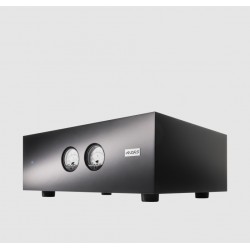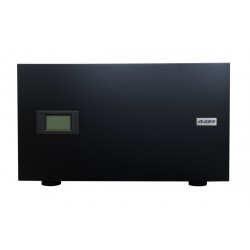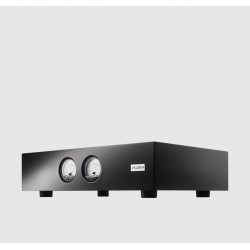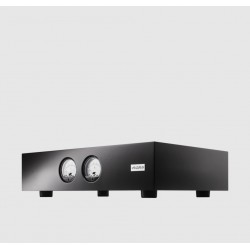






No products
Prices are tax included

audiohobby
Top sellers
-

-

Service fee
1,22 € -

Jantzen Audio Round head screw - 6.8 mm
Round head wood screw - 4 /18,5 / 6,8mm - PH. Price for 1 pcs.
0,28 € -

Jantzen Audio Grille Peg Female 900113
Grille Peg Female 900113 black EVA matches 900102 900103. Price for 1 pcs.
0,34 € -

Jantzen Audio Grille Peg Male 900102
Grille Peg Male 900102 black PA-6 matches 900112 900113 900116. Price...
0,31 € -

Jantzen Audio Round head screw - 8.0 mm
Round head wood screw - 4 /18,5 / 8 mm - PH. Price for 1 pcs.
0,33 € -

Jantzen Audio Round head screw - 8.0 mm
Round head wood screw - 4 /25,0mm - 8 mm - PH. Price for 1 pcs.
0,40 € -

Jantzen Audio 1.3mm2-16AWG silver plated PTFE wire,black
Jantzen Audio Stranded cable 1x1,3mm2 =16AWG silver plated, max.600V...
3,17 €
Categories
- Lundahl transformers
- Lundahl Tube output
- Lundahl Moving coil input
- Lundahl Input and DC-free line output application
- Lundahl Anode chokes, interstage and line output
- Lundahl Mains transformers
- Lundahl Chokes for tube amp power supply or filament current supply
- Lundahl General purpose
- Lundahl Microphone transformers
- Lundahl Line input
- Lundahl Line output transformers
- Lundahl Problem solvers
- Lundahl Digital Audio
- Lundahl Transformers for telephone hybrids, for 100V PA systems
- Lundahl Video transformers
- Lundahl Metal Housings
- Lundahl Amorphous core output transformers
- Lundahl other audiophile type transformers
- Capacitors
- Mundorf ECap
- Mundorf MCap
- Mundorf MCap RXF
- Mundorf MCap ZN
- Mundorf MCap SUPREME
- Mundorf MEAI
- Mundorf MEAIO
- Mundorf MESGO
- Mundorf MCap SUPREME silver/oil
- Mundorf MCap SUPREME silver/gold
- Mundorf MCap SUPREME silver/gold/oil
- Mundorf TubeCap
- Mundorf MLytic HV
- Mundorf MLytic AG
- Mundorf MLytyc HC
- Auricap XO
- Jantzen Audio MKT Cap
- Jantzen Audio Cross Cap
- Jantzen Audio Standard Z-Cap
- Jantzen Audio Superior Z-Cap
- Jantzen Audio Silver Z-Cap
- Jantzen Audio Copper Foil Amber Z-Cap
- Jantzen Audio Alumen Z-Cap
- Jantzen Audio SilverGold Z-cap
- Rike Audio S-cap Paper in Oil
- Mundorf Mlytic HC+ (4-pole)
- Mundorf MLytiv HV+ (4-Pin High Voltage Power Cap)
- Mundorf MCap SUPREME EVO
- Mundorf MCap SUPREME EVO Oil
- Mundorf MCap SUPREME EVO SilverGold
- Mundorf MCap SUPREME EVO SilverGold Oil
- Mundorf MLytic AG+
- RIKE Audio Q-Cap Copper Oil Polypropylen Capacitors
- RIKE Audio Oil-Paper-Capacitors - S-Cap 2
- Rike Audio Q-CAP2 PIO Copper Paper Oil capacitors
- Miflex Audio Capacitors
- Coils
- Mundorf M-Coil
- Mundorf M-Coil BV
- Mundorf M-Coil VL
- Mundorf MCoil VNCU ZeroOhm (resin-soaked)
- Mundorf M-Coil LL Hepta Strand
- Mundorf M-Coil CF
- Mundorf M-Coil transformer-core
- Mundorf M-Coil CF transformer-core
- Mundorf M-Coil BV transformer-core
- MCoil VT transformer-core vacuum impregnated
- Mundorf M-Coil CF i-core
- Mundorf M-Coil BV i-core
- Mundorf M-Coil drum-core
- Mundorf M-Coil drum-core BV
- Mundorf M-Coil pin-core
- Mundorf M-Coil rod-core
- Mundorf M-Coil BV rod-core
- Mundorf M-Coil CF rod-core
- Mundorf M-Coil zero-ohm
- Mundorf M-Coil CF silver
- Mundorf M-Coil silver/gold
- Jantzen Air Cored Wire Coil
- Jantzen 13AWG 1,8mm Air Core Coils
- Jantzen 14AWG 1,6mm Air Core Coils
- Jantzen 15AWG 1,4mm Air Core Coils
- Jantzen 17AWG 1,2mm Air Core Coils
- Jantzen 18AWG 1,0mm Air Core Coils
- Jantzen 20AWG 0,8mm Air Core Coils
- Jantzen 21AWG 0,7mm Air Core Coils
- Jantzen 22AWG 0,63mm Air Core Coils
- Jantzen 24AWG 0,5mm Air Core Coils
- Jantzen 26AWG 0,4mm Air Core Coils
- Jantzen 29AWG 0,3mm Air Core Coils
- Jantzen Audio Wax Coil
- Jantzen Iron Cored Coils With Discs
- Jantzen 13AWG 1,8mm Iron Cored Coils with Discs
- Jantzen 14AWG 1,6mm Iron Cored Coils with Discs
- Jantzen 15AWG 1,4mm Iron Cored Coils with Discs
- Jantzen 17AWG 1,2mm Iron Cored Coils with Discs
- Jantzen 18AWG 1mm Iron Cored Coils with Discs
- Jantzen 20AWG 0,8mm Iron Cored Coils with Discs
- Jantzen 21AWG 0,7mm Iron Cored Coils with Discs
- Jantzen 22AWG 0,63mm Iron Cored Coils with Discs
- Jantzen 24AWG 0,5mm Iron Cored Coils with Discs
- Jantzen 26AWG 0,4mm Iron Cored Coils with Discs
- Jantzen 29AWG 0,3mm Iron Cored Coils with Discs
- Jantzen C-Coil - Toroidal Core
- Jantzen Audio Cross Coil
- Jantzen Audio Iron Coil
- Jantzen Audio Iron Coil 13AWG
- Jantzen Audio Iron Coil 14AWG
- Jantzen Audio Iron Coil 15AWG
- Jantzen Audio Iron Coil 17AWG
- Jantzen Audio Iron Coil 18AWG
- Jantzen Audio Iron Coil 20AWG
- Jantzen Audio Iron Coil 21AWG
- Jantzen Audio Iron Coil 22AWG
- Jantzen Audio Iron Coil 24AWG
- Jantzen Audio Iron Coil 26AWG
- Jantzen Audio Iron Coil 29AWG
- Jantzen Audio Litz Wire Wax Coil
- Mundorf MCoil VLCU
- Mundorf MCoil VSCU
- Mundorf MCoil VS iCore (resin-soaked)
- Parts for x-over assembling
- Resistors
- Solder
- Wires, plugs, terminals and more
- Interconnect Cable
- Speaker Cable
- Power Cable
- Phono & Tonarm cables
- Hook up Wire
- DH-Labs connectors
- WBT Connectors
- Mundorf M-Connect LS plugs
- Mundorf M-Connect terminals
- Mundorf M-Connect CF
- Mundorf M-Connect silver/gold SGW
- Mundorf M-Connect NF Plugs
- Jantzen Speaker Terminals
- Jantzen Port Tubes
- Damping Materials
- Waveguides and adapters
- Speaker Spikes
- Jantzen audio cables
- Wattgate Power Connectors
- Speaker grill cloth
- Headphone cable and connectors
- Heatshrinks, braided sleves for DIY cable
- Speaker jumpers and terminal bridges
- Speaker building accessories
- Kimber Kable
- Furutech
- ETI Research connectors
- Oyaide
- RCA Sockets
- AudioQuest
- AudioQuest DAC
- AudioQuest USB Extenders and Adaptors
- AudioQuest Power Cables
- AudioQuest Power Conditioners
- AudioQuest Accessories
- AudioQuest Speaker Cables
- AudioQuest Audio Interconnect Cables
- AudioQuest Subwoofer Cables
- AudioQuest Tonearm Cables
- AudioQuest Turntable Cables
- AudioQuest Vinyl and Headphone Accessories
- AudioQuest HDMI Cables
- AudioQuest USB Cables
- AudioQuest Optical Cables
- AudioQuest Digital Coax Cables
- AudioQuest AES/EBU (Balanced) Cables
- AudioQuest Ethernet Cables (RJ/E)
- AudioQuest SureGrip® Speaker Connectors
- AudioQuest CL3/FT4 In-Wall Rated Bulk Audio Interconnect Cables & Plugs
- AudioQuest Spade, Pin, and Banana Connectors
- AudioQuest Instant Tool-less Connectors (ITC) for Analog-Audio, Mini-Coax, and RG6 Cables on Spools
- AudioQuest CL3/FT4 In-Wall Rated Bulk Speaker Cables
- AudioQuest Bulk Speaker Cables — Not In-Wall Rated
- AudioQuest CL3/FT4 In-Wall Rated Bulk CAT6 and CAT7 Ethernet Cables & Plugs
- Nordost
- Nordost power cords
- Nordost analog Interconnects
- Nordost subwoofer cables
- Nordost iKables
- Nordost BLUE HEAVEN headphone cables
- Nordost Ethernet-HDMI-4K-USB
- Nordost digital Interconnects
- Nordost tonearm cables
- Nordost speaker cables
- Nordost QRT – Audio Enhancers
- Nordost Sort Systems – Resonance Control
- Nordost Bulk-Specialty
- Nordost Accessories-Apparel
- Audience AV
- Power supply cables/accessories
- Kits, DIY and Loudspeaker upgrade kits
- Speaker Drivers
- Tweeters
- Midrange Drivers
- Fullrange
- Coaxial Drivers
- Midwoofer Drivers
- Woofers
- Passive Radiators
- Subwoofers
- Car Audio drivers
- Scan-Speak Discovery
- Scan-Speak Classic
- Scan-Speak Revelator
- Scan-Speak Illuminator
- Seas Prestige
- Seas Excel
- Seas Exotic
- Seas Lotus
- Design by SEAS
- SB Acoustics
- SB Acoustics Tweeters
- SB Acoustics Midrange
- SB Acoustics Midwoofer
- SB Acoustics Woofers
- SB Acoustics Passive radiators
- SB Acoustics Subwoofer
- SB Acoustics Satori
- Accuton
- Audiotechnology
- Mundorf Hi-Fi AMT U Series tweeters
- Speaker driver accessories
- Monitor Audio
- Loudspeakers
- Metrum Acoustics DACs
- Soldering and termination services
- Soundcare spikes
- Hi-Fi and Hi-End equipment
- Mediaplayers
- Amplifiers
- Speakers
- Vinyl Players
- Earthequake Sound Home Audio
- Earthequake Sound Car Audio
- Earthequake Sound Gaming Audio
- Earthequake Sound Pro Audio
- Sonnet digital audio
- Power conditioners and distributers
- Streamers
- Portable headphone amplifiers
- Fuses and fuse holders
- Headphone Amplifiers
- DACs
- CD/SACD-players
- Turntables
- Tonearms
- Accessories
- Plate amplifiers, modules, power supplies
- DIY Amplifier modules
- DSP devices
- Services
- Accuton
- Analog Manufaktur Germany
- Anthem
- Audes
- Audience
- Audiobyte
- AudioQuest
- AudioTechnology
- Bliesma Audio
- Bluesound
- Bryston
- Clearaudio
- DALI
- Dayton Audio
- Denon
- DH-Labs
- Duelund Audio
- Dune HD
- Dynaudio
- Earthquake Sound
- ELAC
- Electrocompaniet
- ETI Research
- Eversolo
- Feickert Analogue
- Ferrum Audio
- Fountek
- Furutech
- Hegel
- Hi-Fi Tuning
- HiVi
- Hypex electronics
- IsoAcoustics
- Jantzen Audio
- Kimber Kable
List of products by manufacturer Audes
Audes - manufacturer of high-end speakers, tube amplifiers and power conditioners.
In 1935 a group of enthusiats decided to establish production of radio receivers in Estonia. Beccery shipyard, which was practically inactive at that time, rented its building located at Kopli 80 (today Marati 4). A manufacturing plant of radio receivers was opened in Tallinn, Estonia. At the time, the factory was called RET (Raadio-Elektrotehnika Tehas).
In 1938–39 the sales number increased to approximately 4500 units, and 200–220 people worked at RET. The best European and American components from such brands, as Marconi and Philips, were used in radio receivers. By December 1938 10000 radio products were manufactured by the factory overall.
From 1955 the factory started releasing radio-gramophones: a radio receiver combined together with a gramophone. From this moment all RET consumer radio equipment was released under Estonia trademark. The first radio-gramophone model Estonia 55 (later simply Estonia) was available until 1959. It used 12 bantam tubes, selenium bridge rectifier, push buttons for band selection, 2-speed (33 and 78 RPM) gramophone with a piezoelectric ceramic cartridge and two sapphire styli. USW reception capability was added to the radio receiver, while the SW band was separated into five subbands. The loudspeaker system included two 6ГДР-1 (6GDR-1) drivers located in the front wall and two additional 1ГД-9 (1GD-9) tweeters located on the side walls of the cabinet. In that time radio-gramophone was comparable to European products of a similar level in terms of sound quality. Overall 40212 units were released.
Radio-gramophone Estonia 2 was produced between 1958 and 1962. Overall 63861 units were released. The difference from the previous model was that the tweeters were placed in two separate cabinets. Provided their placement in a room was correct it became possible to achieve a considerably more pleasant sound in comparison with Estonia 55.
Radio-gramophone Estonia 3M was in production from 1964 to 1966. Overall 59224 units were released. It was a modification of Estonia 3 in a compact cabinet. The loudspeaker system is comprised of two 4ГД-7 (4GD-7) drivers. The use of separate high-frequency output transformers was abolished. Push button tone control was employed with options for ‘Voice’, ‘Solo’, ‘Symphony’, ‘Jazz’ and ‘Bass’.
Stereophonic period for RET began in 1969, when Estonia Stereo was released. The modular stereophonic tube radio-gramophone was produced from 1969 to 1973. Overall 34474 units were manufactured. The main module included seventeen radio tubes. The gramophone worked at four speeds and employed a piezoelectric ceramic stereo cartridge. The system included a three-way floorstanding loudspeaker pair. The radio-gramophone was equipped with push button switches, manual and motorised station tuner, automatic reception frequency fine tuning and a handle for manual steering of a loop antenna.
Modular stereophonic radio-gramophone Estonia 006 was produced from 1972 to 1978. Overall 94875 units were manufactured. Reception module was similar to Estonia Stereo, however the power amplifier was based entirely on transistors. Motorised fine-tuning of the frequency was substituted by electronic. The radio-gramophone included small-sized bookshelf loudspeakers 10МАС-1 (10MAS-1).
In 1985 production of loudspeaker drivers and assembly of loudspeaker systems was moved from the main Tallinn factory to the Jõhvi branch. At the same time many technological processes were modernised in partnership with Genelec Oy, Finland.
Modular stereophonic radio-gramophone Estonia 010 was a copy of Sharp Optonic. It was produced from 1985 to 1992. Both selling of a complete set, as well as in separate modules was intended. At first the set included active loudspeakers, however production of a power amplification module and 35 АС-021 (35 AS-021) loudspeakers was started in 1985.
Loudspeakers Estonia 35 AC-021 (35 AS-021) were three-way systems with a honeycomb woofer, a dome midrange and a dome tweeter. They were produced from 1985 to 1990. Overall 73398 units were released. Estonia 35 AC 021-1 (35 AS 021-1) was available as well. It lacked protective grids over the midrange and the tweeter. The drivers had round flanges.
In 1992 Estonia was rebranded as Audes (‘Audio from Estonia’).
Current product range for consumers include high-end speakers, tube amplifiers and power conditioners.
Audes ATA-134 Stereo Tube Amplifier
Audes ATA-134 Stereo Tube Amplifier
7 625,00 €In Stock
6 250,00 € tax excl.***Audes ATA-134SE Stereo Tube Amplifier -...
Audes ATA-134SE Stereo Tube Amplifier - special limited edition
10 675,00 €In Stock
8 750,00 € tax excl.***Audes ATA-234R Stereo Tube Amplifier
Audes ATA-234R Stereo Tube Amplifier
4 727,50 €In Stock
3 875,00 € tax excl.***Audes ATA-288R Stereo Tube Amplifier
Audes ATA-288R Stereo Tube Amplifier
5 795,00 €In Stock
4 750,00 € tax excl.***Audes ST-1500 Power Conditioner
Audes ST-1500 Power Conditioner
3 914,17 €In Stock
3 208,33 € tax excl.***Audes ST-3000 Power Conditioner
Audes ST-3000 Power Conditioner
5 032,50 €In Stock
4 125,00 € tax excl.***Audes ST-5000 Power Conditioner
Audes ST-5000 Power Conditioner
7 268,76 €In Stock
5 958,00 € tax excl.***Audes ST-900 Power Conditioner
Audes ST-900 Power Conditioner
2 684,00 €In Stock
2 200,00 € tax excl.***Audes ST-900 Power Conditioner with DC...
Audes ST-900 Power Conditioner with DC blocker
2 897,50 €In Stock
2 375,00 € tax excl.***Audes ST-900+100 Power Conditioner
Audes ST-900+100 Power Conditioner
3 151,26 €In Stock
2 583,00 € tax excl.***


